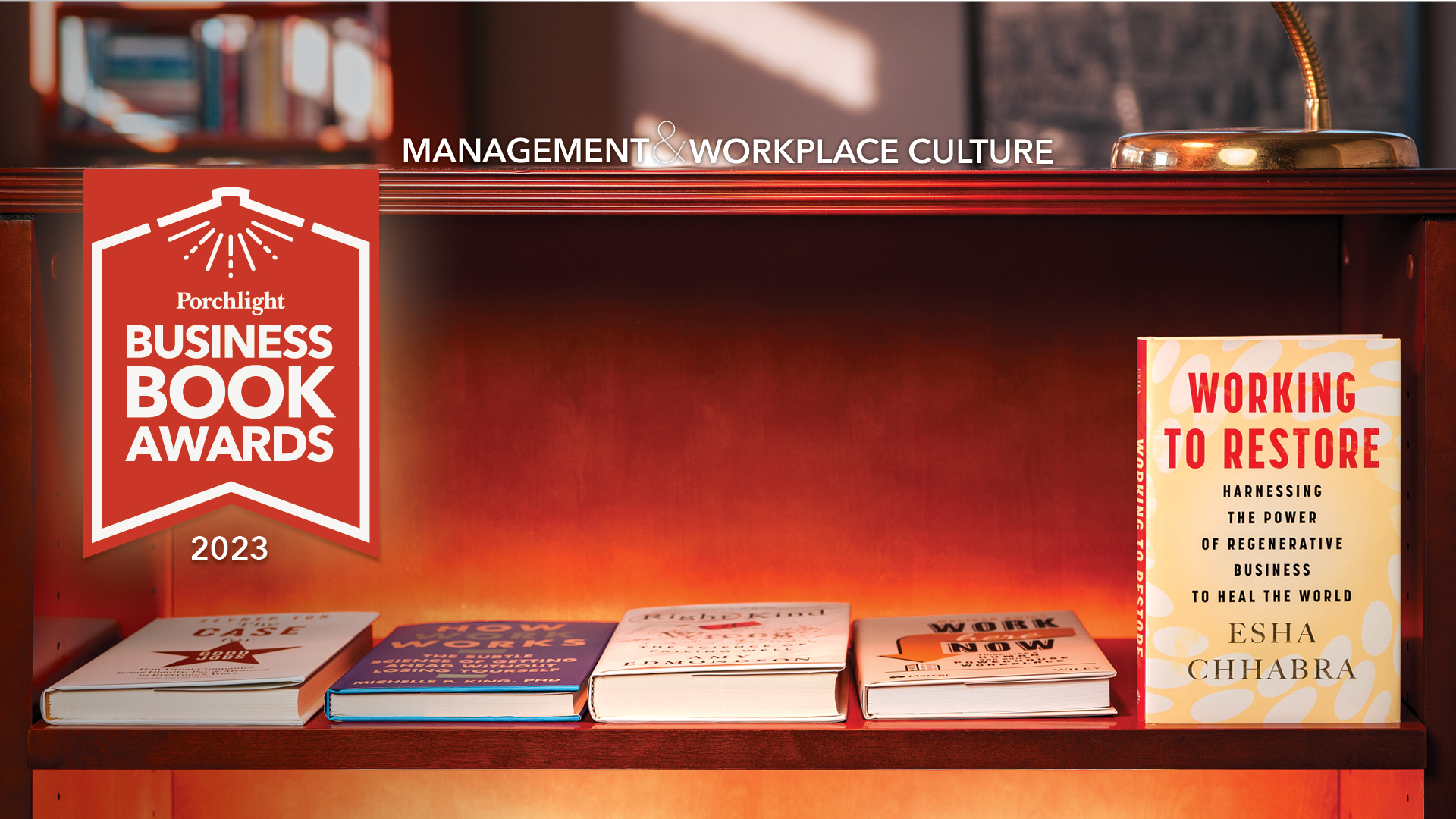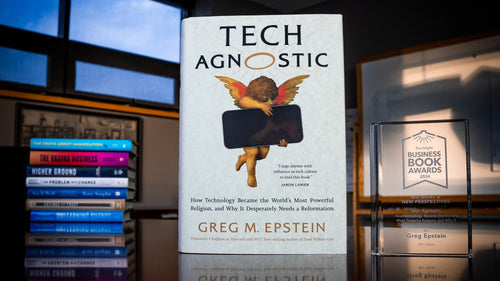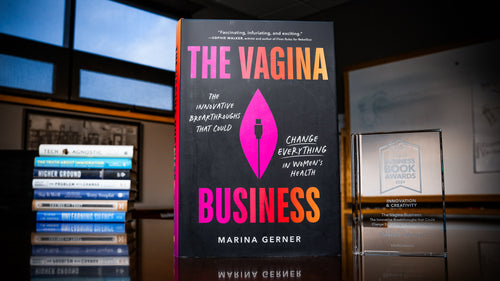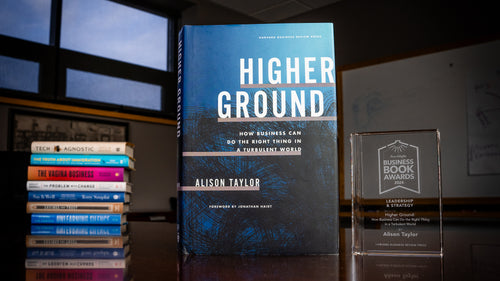Working to Restore | An Excerpt from the Management & Workplace Culture Category
Esha Chhabra’s book may be the most unusual choice in this Management & Workplace Culture category, because it is not a book about management or workplace culture, per se. But it is, I hope, a harbinger of how we must rethink what constitutes both topics. Because it is no longer enough to focus on simply managing ourselves, other people in our organizations, and our bottom line. We must broaden management to include maintaining healthy relationships and resources outside the walls of our organizations, in our supply chains, our communities, and the environment. It would fit just as well in Big Ideas & New Perspectives, but as Chhabra points out repeatedly, the ideas she highlights aren't really new ideas—they've been around for decades at least—but ideas whose time has hopefully finally come.
The following excerpt is how the book, and hopefully more significant change, begins.

This is a book about business—how to do business more thoughtfully, consciously, and equitably. In an increasingly divisive political and economic landscape, it’s become easy to point out what’s wrong in the world. These pages, however, focus on solutions: here’s the problem, but here’s a potential solution. This book is an exploration of what’s possible, a selection of stories from around the world that are held together by a common thread: a regenerative and restorative approach to business, which isn’t limited to the environment. These two words, “regenerative” and “restorative,” suggest rejuvenation, a reconnection with one’s well-being—that pertains to a business’s attitude towards people as well. It’s an exploration of how business could work if it truly took into account its two major stakeholders—the earth and the people that it draws energy from.
It’s not a new idea; rather, it’s one that’s evolved. When I began my career over a decade ago, I wrote about social enterprise, the concept that business can have a social (or environmental) bottom line. The term “social enterprise” was coming into the everyday lexicon of the business world. People were asking, “Is the sole purpose of business to make money for a select few at the top?” Although there had been talk about the shortcomings of our global capitalist system, these social entrepreneurs were operating rogue—building nimble enterprises and often not well known to the public.
[…]
As I have been reporting on the evolution of this business landscape, I’ve seen it mature from the simple idea of “buy one, give one”—a model that utilizes philanthropy by giving away free product for every purchase—to a more nuanced examination of business, leading to the rise of the B corporation, the benefit corporation, the purpose-driven economy. This is all part of a new lexicon and is a real challenge to the conventional thinking that business is primarily a profit-seeking enterprise.
But to build a company with a purpose requires more than just writing a progressive mission statement and slapping up some inspirational quotes around the office. Political and corporate leaders say that we can build a more “sustainable” world. Yet they’ve been trying since 1987, when the term “sustainable development” entered the lexicon in a three-hundred-page document known as the Brundtland Report, published by the United Nations under the title Our Common Future. The report talked of building a more sustainable future. It listed the interlocked crises affecting humanity, including water shortages, drought, famine, pesticide runoff, and overdependence on chemicals.
So can we really build a more sustainable world, given that we’ve been talking about the same issues for the past three decades? Everyone I spoke with for this book was pretty fed up with the word “sustainable.” Sustain what? This imbalance? Instead, these entrepreneurs want to rewrite the rules of business to focus on transparency, simplicity, compassion, and equity. If these values were upheld and put into action every day, we could begin to restore the balance, ecologically and socially.
Let me be clear: there is no ideal solution. Humans create a footprint. It is in our nature to desire, lust, and run after what we do not have. Even many of the companies highlighted in this book acknowledge that they’re producing a physical product that has a footprint. But they can do it without the injustices of the modern supply chain, without exploiting populations, without over-extracting resources, without damaging what we need for life itself: the earth.
Using the United Nations Sustainable Development Goals, a framework of seventeen global goals that call attention to the fundamental social and environmental challenges we face, this book looks at business models that address these challenges. Thus, each chapter contains the stories of a few businesses that have structured their enterprises to tackle complex problems like soil health, renewable energy, waste systems, women’s rights, and conservation of open spaces and wildlife—all of which tie back to the concept of restoration and regeneration through business.
These are stories of entrepreneurs who are trying to restore civility, integrity, and transparency to business. Many have been doing this long before it was trendy, long before these notions became buzzwords in the business world. Some of these businesses are classified as B corporations, but those that are not likely exhibit the qualities of the concept. These entrepreneurs admit that their companies are not perfect. They are fusing elements of business that have long been practiced—a focus on quality, self-funding ventures, building slowly, developing community—and doing so in a manner that suits the present and the aspirations of future generations, while being transparent about the challenges along the way.
In a global economy, it’s hard to operate in isolation. It’s unlikely we’ll go back to cottage industries and entirely local economies. Thus, it’s vital to look at companies that are working at scale, and across continents. These businesses are proving that we can source coffee from East Africa and have small farmers be a bigger part of the business model; have fashion-forward ethical shoes that are made entirely in one country, using natural materials, and shipped in empty spaces in containers; and take textile waste in factories, cut it up, and turn it into usable fabrics. The models exist if we want to explore them, invest in them, and let them function without obsessing over growth.
The capitalistic world order has deep roots around the globe. Designing this new economy is not an easy or overnight task. In fact, many of the companies discussed in this book have been at it for more than a decade, and progress is slow. The tentacles of dirty money have gone far and wide. The business practices that have led us to this point are entrenched. A quick cleanup will not work. It requires thought, reflection, tenacity, and a certain stubbornness by CEOs and founders to slowly build a new model along with the employees and workers to carry that out.
There’s one critical difference to start with, though: these companies are built around a challenge, a larger problem, or an issue. Hence, the goal is not growth, but to solve a dilemma: How do you create a closed-loop product? How do you make sure that every bit of your supply chain benefits from the business? How do you feed the planet while not pilfering from it in the process?
These entrepreneurs are in the business of restoration, fixing a system that has long been lopsided and is fundamentally broken. No perfect or single solution exists for each of these monumental challenges, but this could be the beginning of a new era of regeneration. Let these stories serve as a brainstorm for what can happen, if business thinks beyond profit.
Excerpted from Working to Restore: Harnessing the Power of Regenerative Business to Heal the World.
Copyright © 2023 by Esha Chhabra.
Reprinted with permission of Beacon Press.
All rights reserved.



